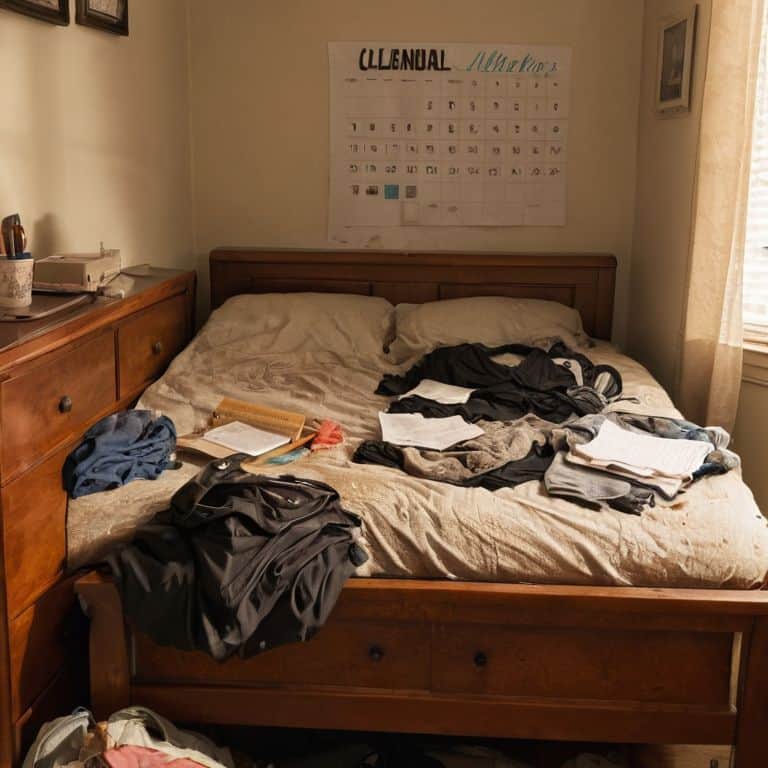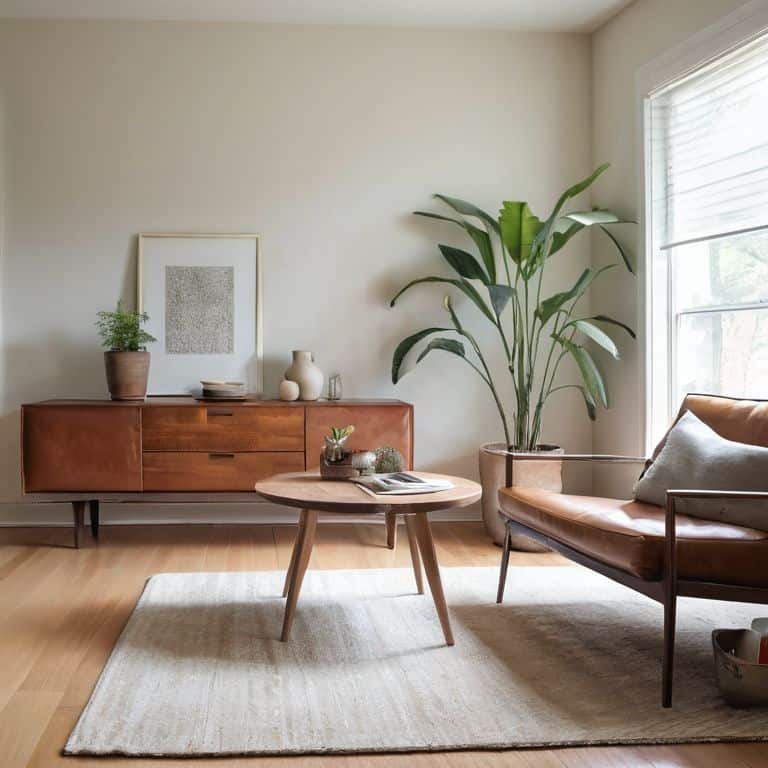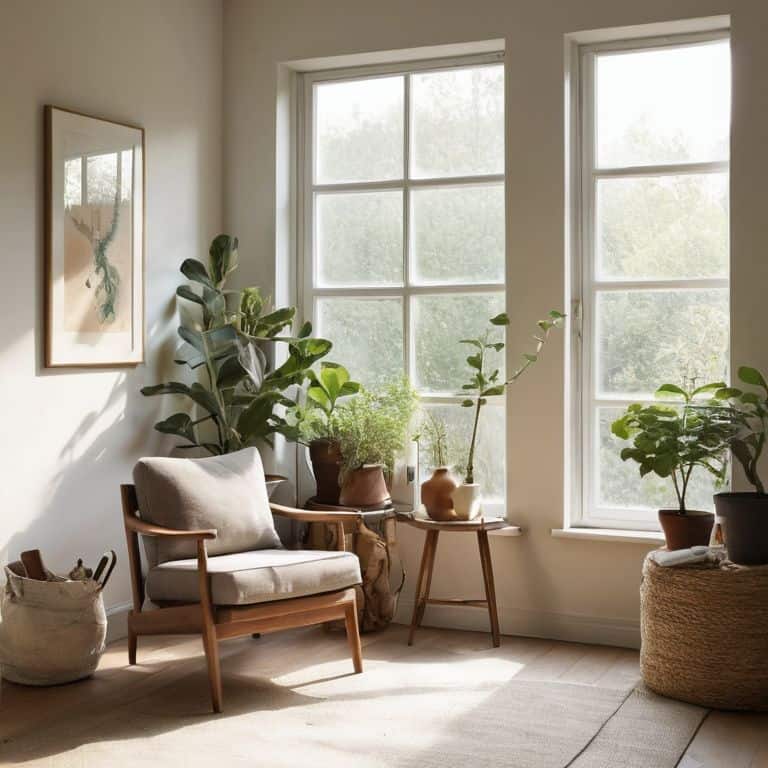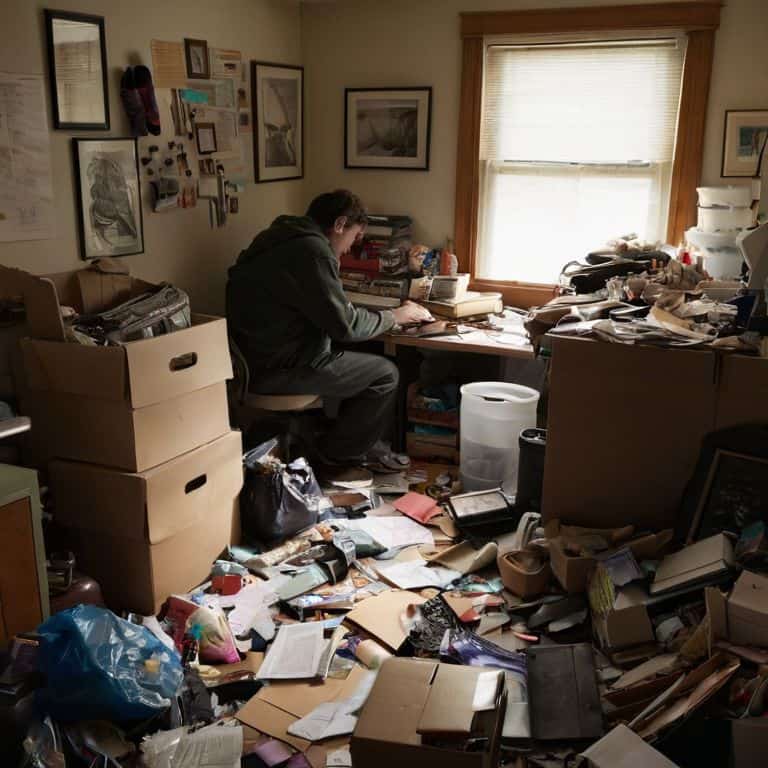I still remember the day I stood in my own cluttered home office, feeling utterly paralyzed by the chaos surrounding me. I had no idea where to start when you’re overwhelmed with clutter, and the thought of tackling it all at once seemed impossible. But as I looked around at the piles of papers, dusty furniture, and disorganized shelves, I realized that I had a choice: let the clutter consume me, or take control and create a space that would bring me peace. This moment marked the beginning of my journey into the world of professional organizing, and I’ve since helped countless individuals transform their own spaces into serene sanctuaries.
As someone who’s been in your shoes, I want to assure you that getting started is often the hardest part. In this article, I’ll share my no-nonsense approach to tackling clutter, and provide you with practical advice on where to start when you’re overwhelmed with clutter. You’ll learn how to break down the daunting task of decluttering into manageable steps, and how to create a system that works for you, not against you. My goal is to empower you with the knowledge and confidence to transform your space into a haven that nourishes your mind, body, and soul. By the end of this guide, you’ll be equipped with the tools and inspiration to turn your cluttered space into a tranquil oasis.
Table of Contents
Guide Overview: What You'll Need

Total Time: several days to several weeks
Estimated Cost: $0 – $100
Difficulty Level: Intermediate / Hard
Tools Required
- Cardboard Boxes (various sizes)
- Label Maker (optional)
- Marker
Supplies & Materials
- Trash Bags (heavy duty)
- Storage Containers (plastic bins, 12 inches by 12 inches by 18 inches)
- Shelving Units (custom or pre-made, 6 feet tall)
Step-by-Step Instructions
- 1. First, take a deep breath and acknowledge that you are not alone in this feeling of overwhelm. Recognize that the clutter around you is not just physical, but also emotional, and that’s what makes it so hard to tackle. Start by giving yourself permission to take it one step at a time, and remember that the goal is to create a space that feels like a sanctuary.
- 2. Next, grab a notebook and pen, and start by brainstorming your why. What does your ideal living space look like? How do you want to feel when you’re in it? What activities do you want to be able to do there? Write down as many details as you can, no matter how small they seem. This will help you clarify your vision and give you a sense of direction.
- 3. Now, take a slow and mindful walk through your space, and start to notice the patterns of clutter. Where do you tend to accumulate clutter? Is it in one area, or is it spread throughout? Take note of the types of items that are contributing to the clutter, and start to think about how you can categorize them.
- 4. Once you have a sense of the lay of the land, it’s time to set a small goal for yourself. Choose one area, like your desk or a single shelf, and commit to clearing it completely. This will give you a sense of momentum and help you build confidence in your ability to tackle the larger task.
- 5. As you start to clear your chosen area, begin to interview each item. Hold it in your hands, and ask yourself if it brings you joy, serves a purpose, or has sentimental value. Be honest with yourself, and remember that the goal is not to get rid of everything, but to surround yourself with things that support your well-being.
- 6. Next, start to think about systems and habits that will help you maintain your space over time. What routines can you put in place to ensure that clutter doesn’t build up again? This might include things like setting aside time each day to tidy, or implementing a “one in, one out” policy.
- 7. As you work through your space, remember to celebrate your progress along the way. Take time to admire your handiwork, and reflect on how you’re feeling. Notice the sense of calm that starts to emerge as your space becomes more organized, and let that motivate you to keep going.
- 8. Finally, don’t be too hard on yourself if you encounter setbacks. Remember that decluttering and organizing is a process, and it’s okay to take it one step at a time. If you find yourself feeling overwhelmed again, take a deep breath, and come back to your why. Let it guide you, and remind you that the end result is worth the effort.
Finding Peace in Chaos

As we embark on this journey to transform our cluttered home solutions into serene sanctuaries, it’s essential to recognize the profound impact of our surroundings on our mental well-being. The process of decluttering and organizing can be therapeutic, allowing us to _let go of the past_ and embrace a more mindful, minimalist lifestyle. By doing so, we can unlock the doors to a more peaceful and productive living space.
In the midst of chaos, it’s crucial to focus on _simple storage ideas_ that can help us regain control over our belongings. This can be as straightforward as implementing a “one in, one out” policy or investing in multifunctional furniture pieces that serve more than one purpose. By adopting these productivity tips for cluttered areas, we can begin to carve out pockets of tranquility within our homes, even in the most organizing small spaces.
As we strive to create a more harmonious environment, it’s vital to acknowledge the _decluttering for mental health_ benefits that come with it. By slowly stripping away the layers of clutter, we can uncover a sense of clarity and purpose, allowing us to reconnect with our inner selves. This journey is not just about simple storage ideas, but about cultivating a deeper understanding of what truly brings us joy and peace in our lives.
Minimalist Lifestyle Benefits
As we navigate the journey from chaos to serenity, embracing a minimalist lifestyle can be a powerful catalyst for transformation. By paring down our belongings and simplifying our surroundings, we can reduce feelings of anxiety and overwhelm. With fewer distractions, we can focus on what truly adds value to our lives. I’ve seen it time and time again: when we let go of the physical clutter, we create space for mental clarity and emotional peace.
This shift in perspective allows us to reevaluate our priorities and cultivate a sense of gratitude for the things that truly matter. By adopting a minimalist mindset, we can break free from the cycle of consumption and constant distraction, and instead, find joy in the simplicity and beauty of our surroundings.
Where to Start When Overwhelmed
When surrounded by clutter, it’s essential to take a step back and breathe. I recommend starting with a small, manageable area, like a single shelf or drawer. This helps to build momentum and confidence. As you clear this initial space, you’ll begin to feel a sense of control and calm. It’s also crucial to remember that every object in your home should have a purpose or a place. I like to think of it as “interviewing” each item to decide whether it deserves a spot in your sanctuary.
By focusing on one area at a time, you’ll start to uncover the underlying reasons for your clutter. Is it due to a lack of storage, or perhaps an emotional attachment to certain items? As you work through these questions, you’ll begin to develop a clearer understanding of what you want your space to look like and feel like. This newfound awareness will guide your decision-making process, helping you to create a home that truly reflects your values and promotes a sense of serenity.
5 Steps to Tame the Chaos: Finding Your Way Through Clutter
- Start by setting a timer for 10 minutes and challenge yourself to clean as much as you can in that time, creating a sense of accomplishment and momentum
- Identify one area or item that bothers you the most and focus on resolving that issue first, creating a ripple effect of motivation
- Practice the ‘one touch rule’ where you try to put things away in their designated place as soon as you’re done using them, reducing clutter buildup
- Envision your ideal space and write down what you want to achieve, creating a clear goal to work towards and guiding your decluttering decisions
- Begin by categorizing items into three boxes: keep, donate/sell, and discard, helping you make intentional decisions about what to keep and what to let go of
Key Takeaways for a More Serene Space
Embracing the process of decluttering as a therapeutic journey, rather than a daunting task, can significantly reduce stress and increase a sense of control over one’s environment
Implementing simple, logical systems for organizing belongings can lead to a clearer mind and a more peaceful living space, as every object has a purpose or a designated place
By adopting a minimalist lifestyle and regularly ‘interviewing’ belongings to assess their value and necessity, individuals can create a home that serves as a true sanctuary, fostering emotional well-being and mental clarity
Embracing the Journey to Clarity
The first step in taming the chaos is not about touching a single item, but about touching the reason why it’s there in the first place – understanding the emotional weight of our belongings is what sets us free to create a space that truly reflects our soul.
Nathan Reed
From Chaos to Serenity: The Journey's End

As we conclude this journey of transforming our cluttered spaces into serene sanctuaries, it’s essential to reflect on the progress made so far. We’ve navigated the overwhelming feeling of being surrounded by clutter, learned how to find peace in chaos, and explored the benefits of embracing a minimalist lifestyle. By understanding that every object should have a purpose or a place, we’ve been able to methodically sort through our belongings, deciding what to keep and what to let go of. This process, though sometimes daunting, is a crucial step towards creating a space that not only looks organized but also feels therapeutic and calming.
Now, as you stand in your newly organized space, remember that maintaining serenity is a continuous process. It’s about creating habits that ensure your space remains a reflection of your clear and organized mind. Don’t be too hard on yourself if clutter starts to accumulate again – simply return to the principles we’ve discussed, and gently guide your space back to its serene state. With time and practice, you’ll find that the sense of calm and clarity you’ve cultivated in your home will begin to overflow into other areas of your life, inspiring a deeper sense of peace and fulfillment.
Frequently Asked Questions
How do I know which area of my cluttered space to tackle first?
To determine where to start, take a few deep breaths and walk through your space. Notice which area bothers you the most or causes the most stress. That’s often the best place to begin, as tackling it will give you the greatest sense of relief and momentum to continue your organizing journey.
What if I'm so overwhelmed that I don't even know what I'm looking at, let alone where to start?
Take a deep breath and begin by simply observing your space. Don’t try to tackle anything just yet. Notice the areas that feel most overwhelming, and then ask yourself, ‘What’s the one thing I wish I could change about this space today?’ Start with that small, manageable goal, and we’ll build from there.
Are there any simple, everyday objects that can help me get started with organizing when I feel completely lost?
I always recommend starting with a simple box or bin. Label it ‘Maybe’ and fill it with items you’re unsure about keeping. This small act can be incredibly liberating, helping you break the stalemate and begin your organizing journey.
